Sickle / Scythe
 |
|
 |
 |
| Sickle used for grass cutting | Saw Sickle | Harvest Sickle |
 |
 |
 |
| Small Sickle | Weed Scraping Sickles | Wood Sickles |
 |
 |
 |
| Sickle used for grass cutting | Saw Sickle |
 |
 |
| Harvest Sickle | Small Sickle |
 |
 |
| Weed Scraping Sickles | Wood Sickles |
 |
 |
Sickle used for grass cutting
Thin Sickle
Thin sickles are the most common type of sickles used for grass cutting. They are characterized by their thin blade thickness and sharp edges, making them the most efficient in terms of cutting performance among sickles.

It is suitable for cutting relatively soft grass from spring to summer.
The Best 3 of Thin Sickle
  "OJIKA" Mowing Sickle, 
|
 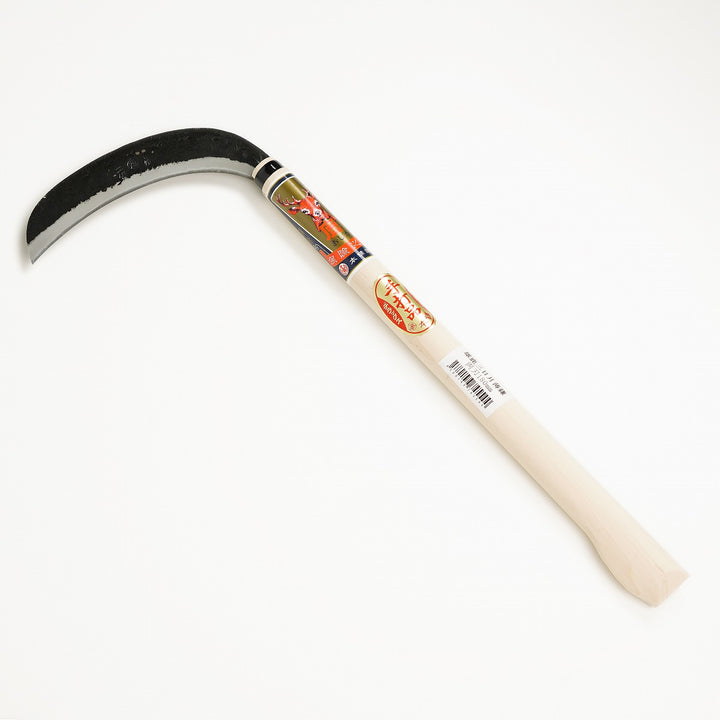 "OJIKA" Mowing Sickle 
|
 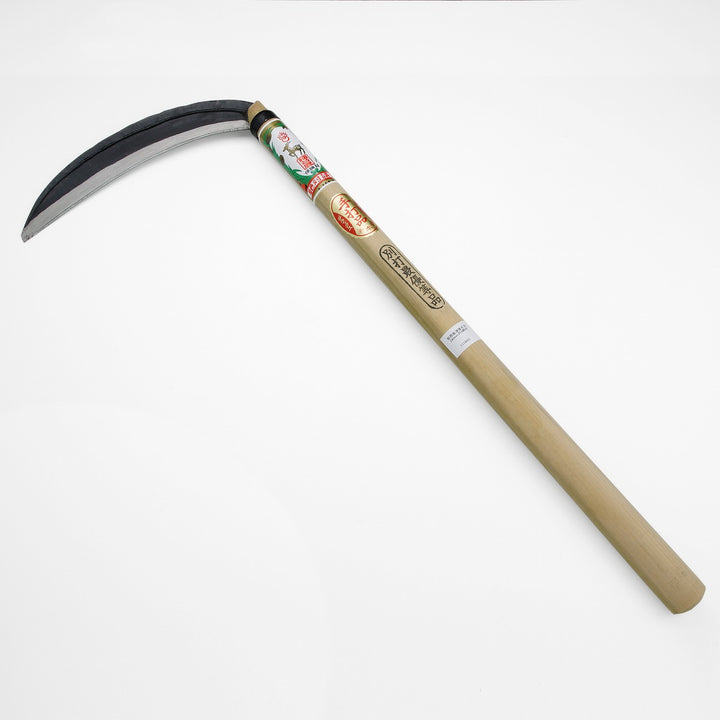 "INARIJIKA" Mowing Sickle, 
|
Medium-Thickness Sickle
Medium-Thickness Sickles are suitable for cutting plants with relatively hard leaves and stems. They feature a thicker and stronger blade compared to Thin Sickles, which makes them less prone to chipping.

It is suitable for cutting tough plants like reeds and silver grass, which are difficult to cut with a Thin Sickle. It is ideal for cutting stubborn weeds from late summer to before winter.
The Best 2 of Medium-Thickness Sickle
 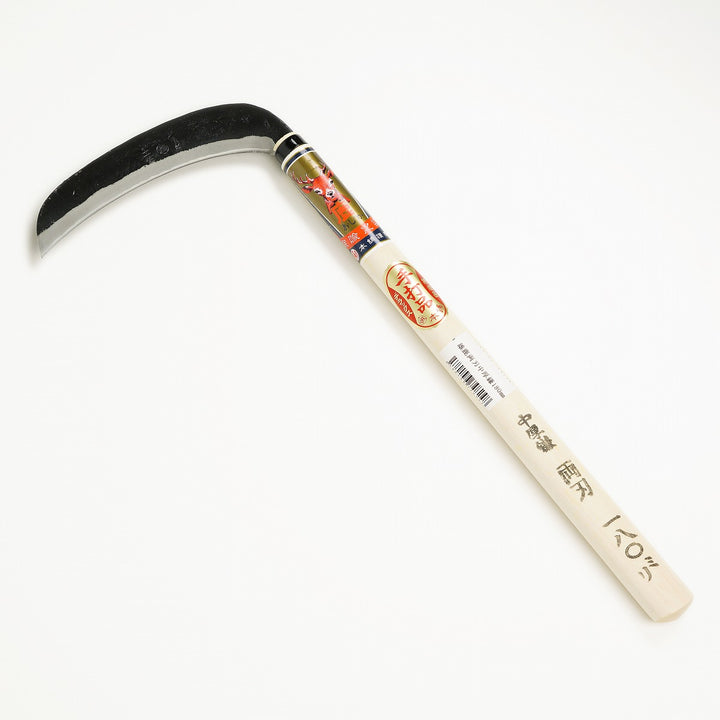 "OJIKA" Aogami Mowing Sickle Medium-Thickness Sickle Double Bevel, 180mm 
|
 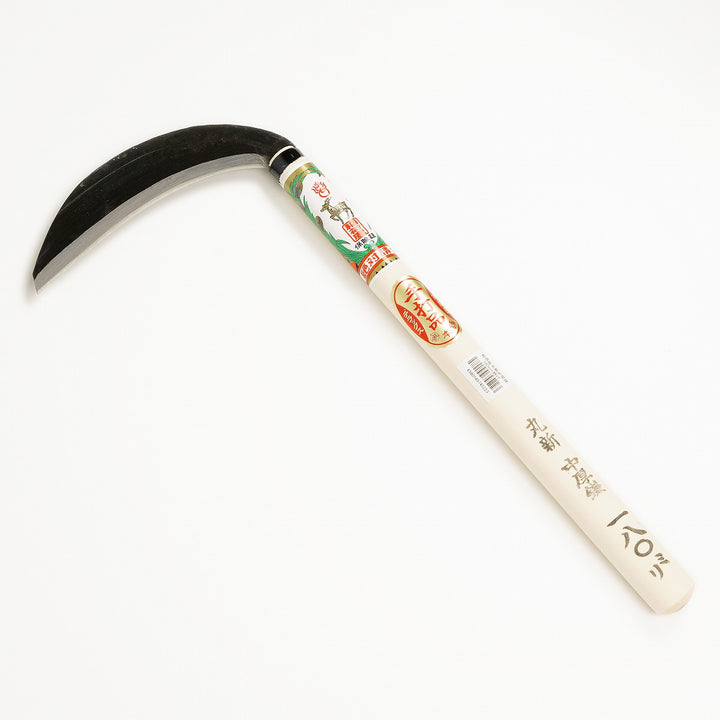 INARIJIKA Mowing Sickle Medium-Thickness Single Bevel, 180mm 
|
Thick Sickle
Thick Sickles, also known as Wood Sickles or Mountain Sickles, are suitable for cutting plants with hard stems and thicker twigs.They are thicker and more robust than Medium-Thickness Sickles, making them less prone to chipping. Due to their thickness, they are heavier than Thin or Medium-Thickness Sickles, allowing the user to leverage the weight for cutting.

Single-edged sickles have excellent sharpness, making them ideal for cutting vines. However, they are prone to chipping when used to cut small branches, so double-edged sickles are recommended for cutting brush and small branches.
The Best 2 of Thick Sickle
  'OJIKA' Thick Sickle, Blade Edge : Aogami Steel, Double Bevel, 180mm 
|
 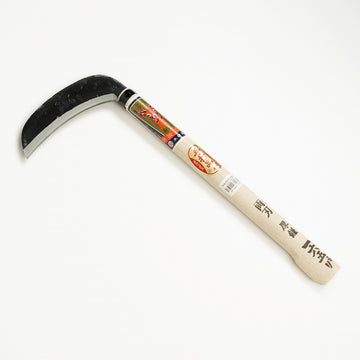 'OJIKA' Thick Sickle, Blade Edge : Aogami Steel, Double Bevel, 165mm 
|
Differences in thickness among Thin Sickles, Medium-Thickness Sickles, and Thick Sickles
For double-edged sickles with a blade length of 180mm, the blade thickness of Thin Sickle: 2.5mm, Medium-Thickness Sickle: 3.5mm, Thick Sickle: 5mm

(In the photo, from left to right, are Thin Sickle, Medium-Thickness Sickle, and Thick Sickle.)
The thinner the blade, the sharper and more efficient the cutting performance. However, thinner blades are more prone to chipping. Therefore, it is important to choose the sickle according to its intended use.
Saw Sickle
Saw sickles are versatile tools used for various tasks, including cutting grass, grains, and fiber-rich stems and roots, as well as cutting ropes. They are characterized by their serrated, saw-like edges on the blade.

It is ideal for harvesting grains, such as rice, and for cutting fiber-rich stems and roots.
This versatile sickle can also be used for unpacking tasks. The blade is tailored to specific purposes, and it can be categorized into saw sickles, weeding sickles, and rope cutting sickles.
The Best 3 of Saw Sickle
 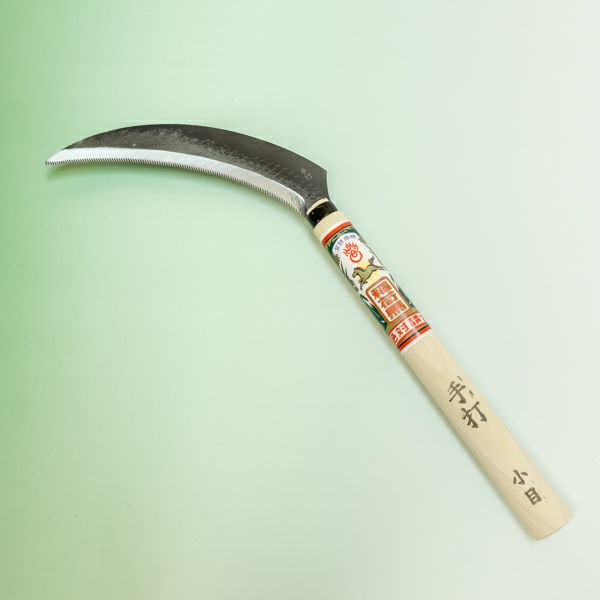 "INARI-UMA" Saw Sickle for Right Hander Blade Length 170mm(abt 6.7 Inch) 
|
  "OJIKA" Saw Sickle 
|
 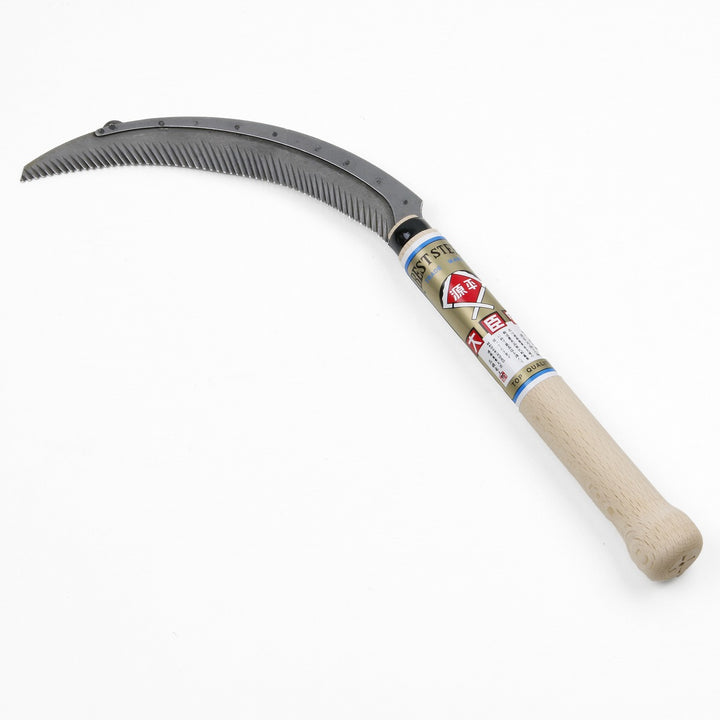 "GENPEI" Saw Sickle 
|
Harvest Sickle
These are specialized sickles with blades and shapes suited for harvesting vegetables. At our store, we offer a variety including Asparagus Cutting Sickles, Cabbage Sickles, and Chinese Cabbage Sickles.

The Best 2 of Harvest Sickle
 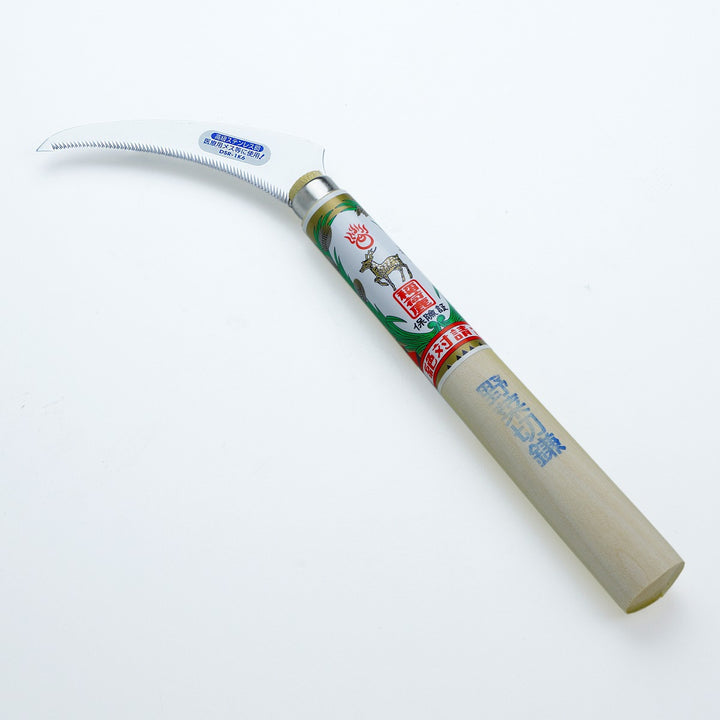 Harvest Sickle Stainless Steel, Blade Length 110mm 
|
 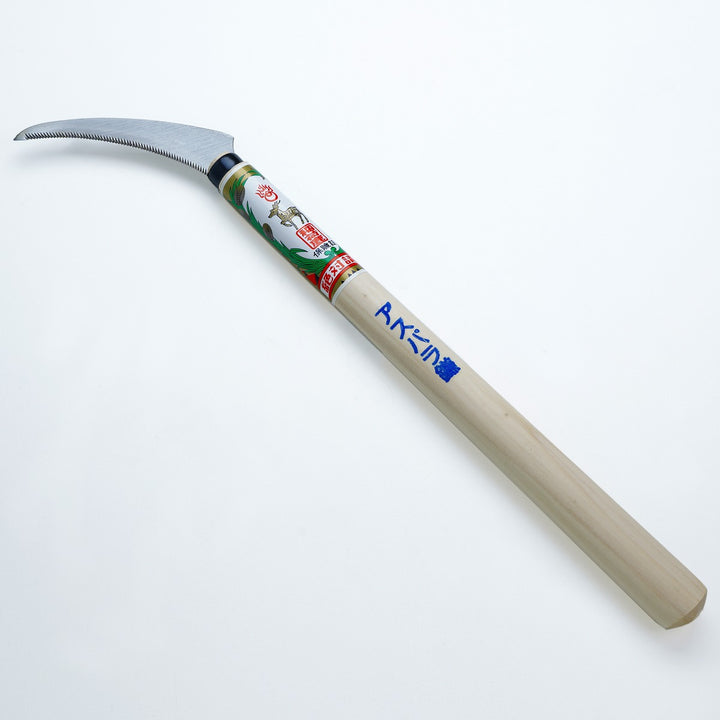 Harvest Sickle Stainless Steel, Blade Length 100mm 
|
Small Sickle
These sickles are versatile tools that can be used for everything from home gardening to grass cutting and weeding. The blade length is around 80mm, and the small blade allows for excellent maneuverability.

The Best 2 of Small Sickle
  INARIJIKA Weeding Small Sickle,Wavy Blade Stainless Steel 
|
 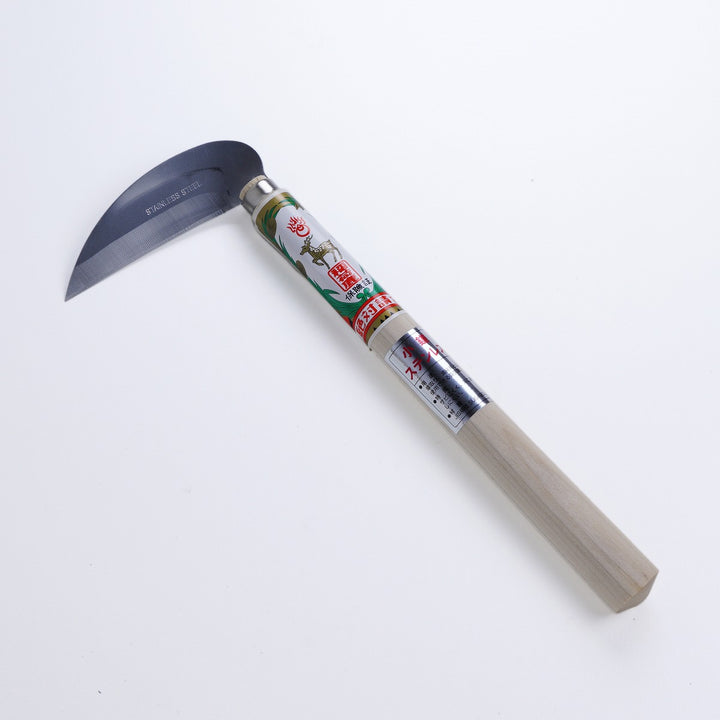 INARIJIKA Small Sickle, Stainless Steel 
|
Weed Scraping Sickles
"Weeding sickles are tools designed to scrape weeds from the root.
They are characterized by blades that can be driven into the ground to sever weeds at the root. Depending on the purpose, they come in different shapes, such as sickles with steel blades, saw-bladed sickles, and double-edged sickles.
| Weeding Sickles | ||
 |
Weeding sickles are characterized by their saw-like blades and are different from scraping or cutting sickles. They have hooks that grab the weeds and pull them out by the root. |
|
| Twisted Sickle | ||
 |
"The blade is designed to easily penetrate the ground, allowing the twisted sickle to completely uproot small weeds along with the soil. The direction of the blade varies depending on the dominant hand, so it is important to pay attention when purchasing. |
|
| Cutting Sickle | ||
 |
"The blade is more curved than that of a twisted sickle, making it easier to penetrate the soil. It is a weeding sickle designed to cut and remove tough and thick weeds from the root." |
|
| Double-edged Sickle or Triangle Sickle | ||
 |
They are characterized by blades designed to uproot weeds or sever them by penetrating the ground. |
|
|
In the case of steel-bladed sickles, the contact between the soil and the blade helps keep the blade in a continuously sharpened state, resulting in long-lasting sharpness. |
||
| Weeding Sickles |
 Weeding sickles are characterized by their saw-like blades and are different from scraping or cutting sickles. They have hooks that grab the weeds and pull them out by the root. |
| Twisted Sickle |
 "The blade is designed to easily penetrate the ground, allowing the twisted sickle to completely uproot small weeds along with the soil. The direction of the blade varies depending on the dominant hand, so it is important to pay attention when purchasing. |
| Cutting Sickle |
 "The blade is more curved than that of a twisted sickle, making it easier to penetrate the soil. It is a weeding sickle designed to cut and remove tough and thick weeds from the root." |
| Double-edged Sickle or Triangle Sickle |
 They are characterized by blades designed to uproot weeds or sever them by penetrating the ground. |
|
In the case of steel-bladed sickles, the contact between the soil and the blade helps keep the blade in a continuously sharpened state, resulting in long-lasting sharpness. |
The Best 3 of Weed Scraping Sickles
  Weeding Sickle - Twisted Sickle, Stainless Steel 
|
  Weeding Sickle - Cutting Sickle, Hagane 
|
  Weeding Scraping, Triangle Sickle, Stainless Steel 
|
Wood Sickles
Wood sickles have thicker blades than general sickles and are ideal for cutting brushwood and small branches in forests. They are used by swinging them in a sweeping motion.

The photo shows, from left to right, pruning sickle, hatchet sickle, climbing sickle (ascending sickle), and brush-cutting sickle.
| Pruning Sickle |
|
This sickle is ideal for pruning small branches. The pruning sickle is similar to the machete sickle and the climbing sickle, but has a slightly thinner blade compared to the climbing sickle. |
| Hatchet Sickle |
|
The hatchet sickles at our store have thick blades, allowing them to cut slightly thicker branches and thin trees. |
| Climbing Sickle |
|
"The climbing sickle (ascending sickle) is a forest sickle used for cutting shrubs. It has a slightly thinner blade compared to the hatchet sickle, making it easier to cut vines. |
| Brush-cutting Sickle |
|
"Our brush-cutting sickles are designed for ease of use, featuring a curved blade throughout. |
The Best 3 of Wood Sickles
 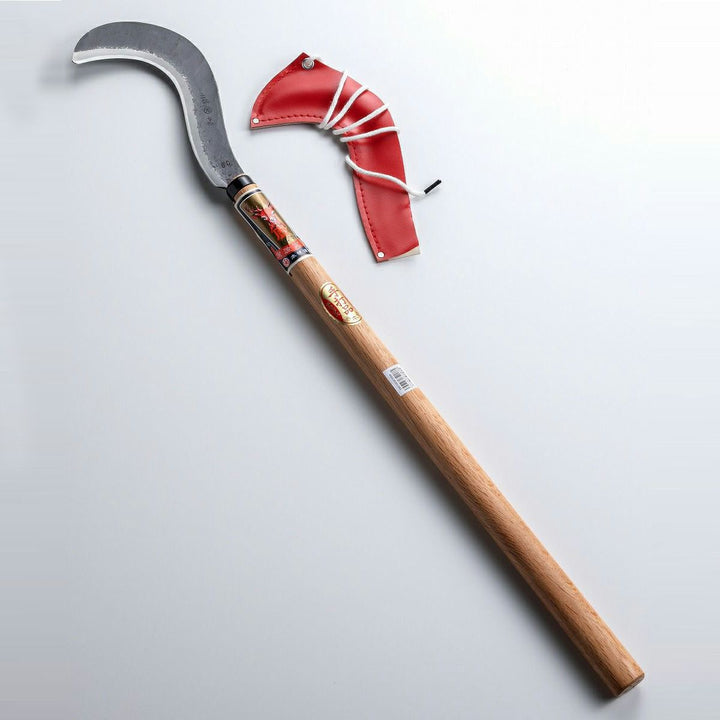 "OJIKA" Scythe Long Handle Double-Bevel Aogami Steel brush-cutting sickle, 605mm 
|
 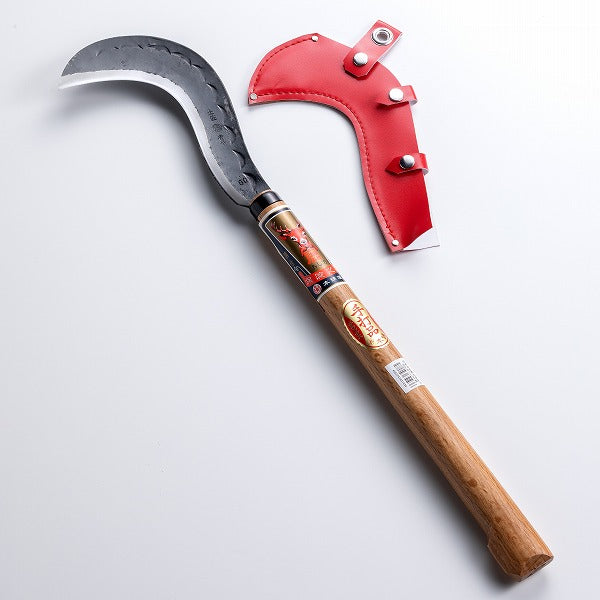 'OJIKA' Scythe Long Handle Double-Edged Aogami Steel brush-cutting sickle 395mm 
|
 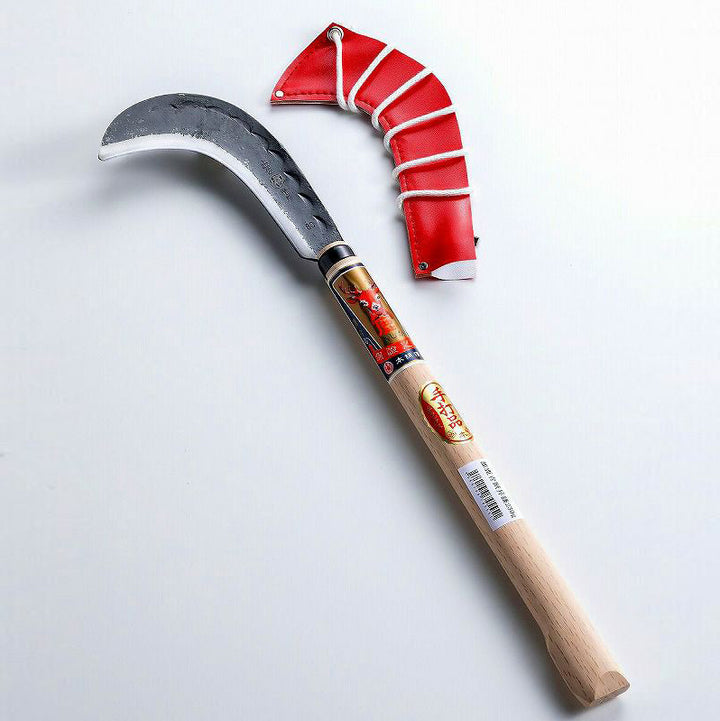 "OJIKA" Sickle Aogami Steel Climbing Sickle 
|
| How to sharpen a Sickle |
|
The blade of a sickle is curved and cannot be sharpened like a knife. |
1. Preparation of the grindstoneBefore use, soak the whetstone in water for a few minutes to ensure it is fully saturated with water. *The soaking time in water will vary depending on the whetstone, so please check the whetstone you are using.  |
2. SharpeningHold the sickle in the opposite direction with your left hand, and press the sickle against the blade.The angle of the whetstone is approximately 15 to 20 degrees. Place the whetstone so that it is flush with the edge, and gradually move it towards the edge of the blade, moving it back and forth repeatedly while sharpening.  |
3. Remove burrsOnce you have finished sharpening, turn the blade over and lightly run your finger over the edge. If the edge of the blade catches lightly, it is a sign that a burr has formed.is.  Remove these burrs by applying the whetstone to the back of the blade and sharpening it 2-3 times. This completes the sharpening process.   |
|
|
| Customer Review |

|

|

|

|

|

|

|

|

















